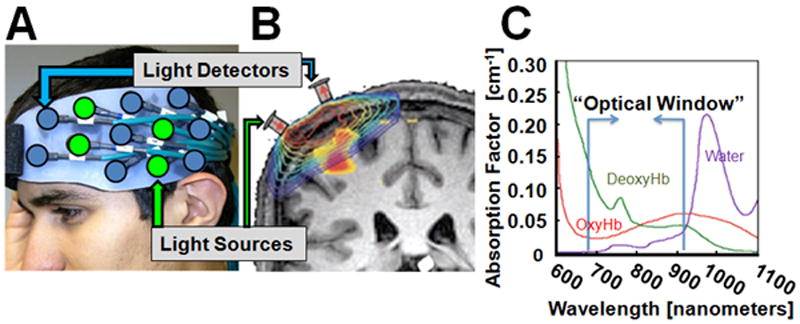Figure 1.

Functional near-infrared spectroscopy (fNIRS) is used to non-invasively measure changes in oxy- and deoxy-hemoglobin in the brain. In panel A), a grid of fiber optic-based light sources and detectors is shown mounted on flexible head cap worn by the participant. Each of these source-detector pairs measures light from a diffuse volume of tissue beneath the pair as shown in the model of light propagation (in log-scale) in panel B (described in [19]). This light can reach approximately 5-8mm into the brain cortex at a source-detector spacing of 3.2cm. Light at two wavelengths (690nm and 830nm) is used to reconstruct changes in oxy- and deoxy-hemoglobin from the intrinsic absorption properties of hemoglobin (panel C) and the modified Beer-Lambert relationship [16].
